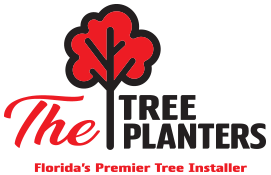SYCAMORE TREE
The sycamore is an impressive tree, typically growing to heights of 75 to 90 feet. It boasts a rapid growth rate and thrives in wet, compacted soils. One of its most striking features is its white bark, which peels off in patches, adding ornamental appeal. Initially shaped like a pyramid, the sycamore matures into a spreading crown that can be rounded or irregular in form, supported by large branches spaced two to four feet apart along the trunk for optimal strength. The tree’s dominant central leader generally promotes a desirable limb structure with minimal need for corrective pruning—except for removing upright branches with tight crotches that may occasionally appear. Additionally, thinning out the numerous early-developing branches on the central trunk can be beneficial.
Height: 75 to 90 feet
Spread: 50 to 70 feet
Crown uniformity: symmetrical
Crown shape: pyramidal, round, spreading
Crown density: dense
Growth rate: fast
Texture: coarse
Light requirement: full sun
Soil tolerances: clay; sand; loam; alkaline; acidic; wet to well-drained
Drought tolerance: high
Aerosol salt tolerance: moderate
Sycamore trees are ideally suited for moist soils that retain moisture, as dry conditions can reduce their lifespan. While they have been criticized by horticulturists and others for being messy—shedding leaves and small twigs throughout the year, especially in dry weather—they excel in challenging environments. These include small planting pits in sidewalks and areas with low soil oxygen and high pH levels. However, their robust roots can potentially lift and damage nearby sidewalks. Additionally, the dense shade from their canopy may impede lawn grass growth underneath, and fallen leaves in autumn might release substances harmful to newly planted grass. Due to these characteristics, sycamores are not recommended for yard planting but are better suited for more demanding locations where some irrigation is available during droughts. When used as street trees, it is advisable to maintain a distance of at least 12 feet (preferably more) between the sidewalk and curb to accommodate their growth effectively.
Sycamore trees are susceptible to several fungal and bacterial diseases, but understanding their effects can help in managing them effectively. Fungi can cause leaf spots on sycamore trees, though these are typically not severe. Anthracnose is a more concerning disease that initially presents as frost-like damage on young leaves. As the leaves mature, light brown areas develop along the veins, eventually leading to leaf drop and significant defoliation of the tree. This disease can also result in twig and branch cankers. While trees often produce a second set of leaves, repeated infections may weaken them over time.
To manage these issues, it is advisable to apply a fungicide that is specifically labeled for this purpose and follow current guidelines for its use. Fertilizing the trees can also enhance their resilience against repeated defoliation events.
Another common issue is powdery mildew, which manifests as a white fuzz on leaf surfaces and causes distortion of the foliage. Bacterial leaf scorch poses a more serious threat by potentially killing affected trees over several growing seasons; symptoms include scorched-looking leaves that become crisp and curl up with reddish-brown discoloration.
Additionally, stress-related conditions such as drought-induced stress can lead to the formation of stress cankers on tree limbs. Understanding these diseases allows for better management practices to maintain healthy sycamore trees in landscapes.

